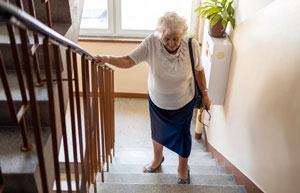
The COVID-19 pandemic disrupted many aspects of our lives, including how we work. With shutdowns and social distancing measures put in place, over one-third of US workers teleworked between May and June 2020, a 500% increase from those who worked exclusively from home in 2010[1]. By August 2020, about a quarter of the workforce continued to telework[2]. After this quick switch to telework, many people were in violation of zoning laws either unknowingly or without concern. Fortunately, despite the large number of people working from home, increases in permits and complaints for home uses did not occur.
Additionally, while not tied to the regulation itself, allowing home occupations can result in more economic opportunity and employment within a community (especially in smaller towns); provide residents of all resource levels a low-cost way to start a new business; support a better work-life balance by allowing for childcare and work to co-occur and reduce commutes; and create opportunities for those with physical barriers to leaving home to have meaningful and gainful employment.
Given the likely growth of home occupations, local governments should review their zoning laws to ensure that home occupations appropriately define telework/telecommuting, permit office activity done by homeowners and renters that does not a cause a nuisance to others, and ensure consistency between zoning laws and actual uses allowed as home occupations in the community.

Types of Home Enterprises
“Home enterprise” is the broadest term used to identify business uses that could occur in a home. There are four categories within home enterprise that further describe business-related uses within a home.
- Home-based business – business where at least half of the home is used for business purposes; these are often found in agricultural and forestry districts, such as a cabinet maker operated out of a home.
- Home-based cottage industry – business where at least half of the home is used for business purposes; often occurs in a mixed use residential/commercial district in resort areas, such as a café operated out of a home or bed and breakfast.
- Home occupation – a customary, incidental, secondary, and subordinate use to the residential use. Benefits of operating the business go to the homeowner, and there can be in-person transactions that occur on the site. Home occupations do not include hobbies or group living activities.
- Telecommuting/Telework – an arrangement between an employer and employee for performing work at a location other than the primary work location, such as at the home of an employee or in a satellite office, and sending and receiving material by phone, email or other electronic means.
Purpose of Home Occupation Regulations
As with anything, it is important to keep the purposes of home occupation regulations in mind. Some of these purposes include:
- Permitting no-nuisance commercial uses (i.e., telecommuting) and home occupations while maintaining a residential area without excessive noise, light, or other nuisances that undermine the purpose and character of the residential district
- Allowing low-nuisance business uses within a residential area with appropriate standards that ensure any nuisances that may arise are minimized
- Ensuring that home occupations remain a subordinate and accessory use to the residential use of the site
- Reducing worker and government burden to submit and review applications for telecommuting and related invisible and no-impact uses
- Ensuring that the location of the home occupation is occupied and operated by persons of legal or equitable interest in the dwelling unit
Uses That Are Not Home Occupations But Need To Be Addressed
Sometimes home uses do not fall under the definition of a home occupation, such as group living facilities (some of which may not be locally regulated), hobbies, public accommodations, and temporary uses. These should also be addressed in the ordinance.
Uses That Are Home Occupations But Cannot Be Locally Regulated
The Michigan Zoning Enabling Act, Section 204 (MCL 125.3204) states that instruction in a fine art, music or is a permitted home occupation by an occupant of any single-family dwelling located in any district.
The Future of Work
Many people, workers and employers alike have experienced the benefits of work from home and are hoping it will continue to at least some extent. Research done by a group from the National Bureau of Economic Research indicated that of those able to work from home, only 22% would like to return to the office full time, with almost half (38.5%) indicating that they would like to telecommute at least four days a week[3]. Since home occupations are not likely to go away, communities should carefully review their regulations for home occupations to promote economic activity while maintaining the character of residential districts, streamline administrative and planning commission responsibilities, and ensure equal treatment and uniform enforcement for those seeking or limited to work from home.
Giffels Webster has been dedicated to making communities better for over 65 years, specializing in community planning, civil engineering, landscape architecture, Geographic Information Systems, traffic engineering, and surveying.
For more information, please call Giffels Webster at 866.271.9663 and visit www.giffelswebster.com.
[1] Mateyka, P.J., Rapino, M.A., & Landivar, L.C. (2012, Oct). Home-Based Workers in the United States: 2010, P70-132. Current Population Reports, Household Economic Studies: U.S. Census Bureau.
[2] TED: The Economics Daily. (2020, Sept. 15). One-quarter of the employed teleworked in August 2020 because of COVID-19 pandemic. U.S. Bureau of Labor Statistics.
[3] Barrero, J.M., Bloom, N., & Davis, S.J. (2021). Why working from home will stick. Working Paper. National Bureau of Economic Research.



